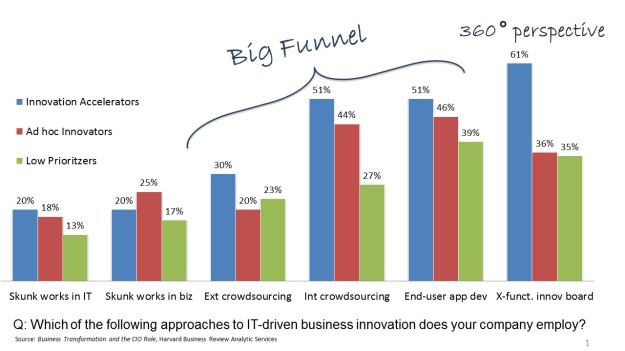CIOs who don’t see the strategic use of information as their main job should relinquish the title
I have to admit it – I’m baffled. In all the research I’ve done in the past year, business leaders again and again say they believe the CIO is the right person to lead digital innovation. And yet, again and again, there’s a gap between where everyone – CIOs and their business partners included – think the CIO should be and where they actually are. CIOs just can’t seem to break out of the technology service provider role.
In the Harvard Business Review Analytic Services study, “Business Transformation and the CIO Role,” 94% of respondents said CIOs would add the most value to the business by either leading business technology transformation or, even better, leading IT-driven business innovation and strategy. Only 6% voted for the CIO to focus on running the IT function to support business operations. And yet the vast majority – 70% – said that’s exactly where the CIO spends his or her time.

I’ve also had a number of conversations lately with strategic CIOs who view their role as helping their business leverage information – they frame the digital opportunity in that context. Sure, they need technology to do that, but that’s not where the value lies or how they define their role.
Finally, you’d think, the title chief information officer is going to live up to its name! And yet, some companies are hiring chief data officers to focus on that while the CIO keeps running IT, according to a recent article from Computerworld. “The role isn’t – and shouldn’t be – about implementing IT systems,” the author writes. She quotes KeyBank CDO Ursula Cottone as saying, “Implementing tools does not [by itself] drive business value…. They created this role knowing what was needed – a blend between business and technology and the ability to bridge the gap.”
Does this sound familiar to anyone? What’s happened here? Do we really need another C level executive to focus on how to leverage information for business value?
Personally, I think if we do, then CIOs have failed. They’ve failed to get their IT houses in order so they can lead digital innovation – which is all about new ways to exploit information. It doesn’t matter if you’re talking about mobile, social, collaboration, databases, storage, business ecosystems or the internet of things. The technology is just the conduit; it’s the information that matters. And if that’s the case, I have another title for you: CITO. CIOs should relinquish their title and assume that of chief information technology officer. And the 70% who are still focused on just running the IT function should give up the “C” as well.










